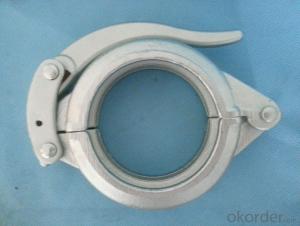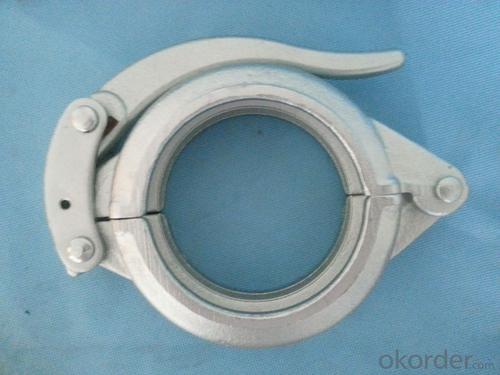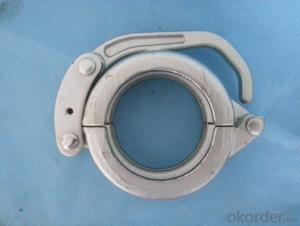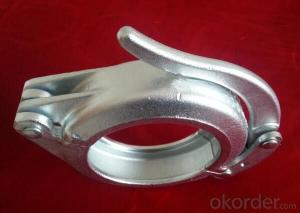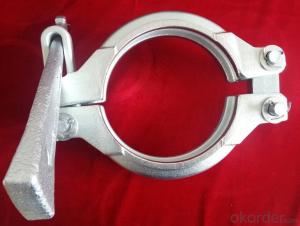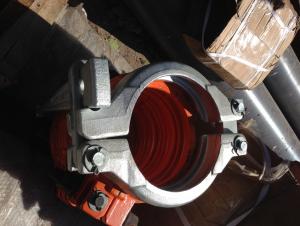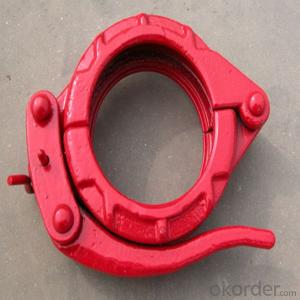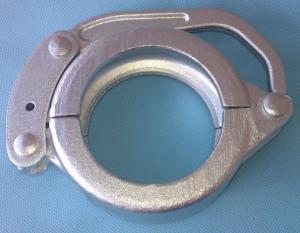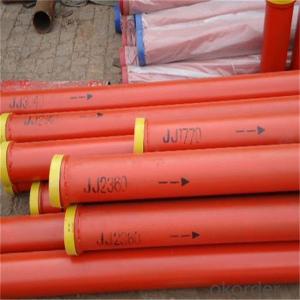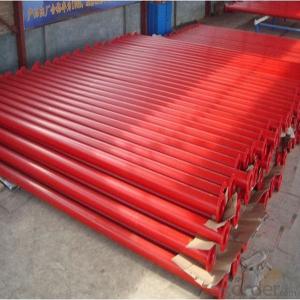Concrete Pump Clamp DN100 4
- Loading Port:
- China main port
- Payment Terms:
- TT OR LC
- Min Order Qty:
- 20 PCS
- Supply Capability:
- 1000 PCS/month
OKorder Service Pledge
OKorder Financial Service
You Might Also Like
Product Description:
A coupling is a device used to connect two delivery pieps together at their ends for the purpose of transmitting, and prevent the concrete from leaking. Couplings do not normally allow disconnection of shafts during operation.
Main Product Features:
1.Forged
2.2--8 inch
3.Galvanizing/Baking varnish
4.More durable,light,beautiful
Production steps:

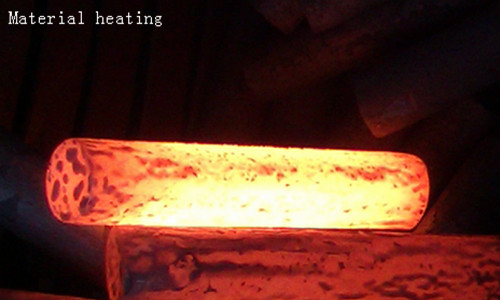
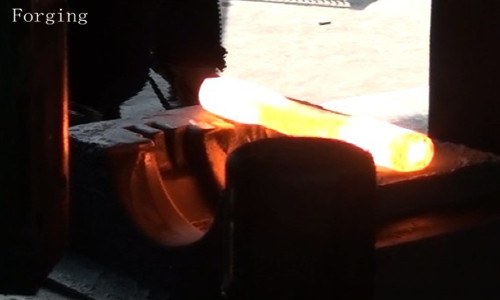

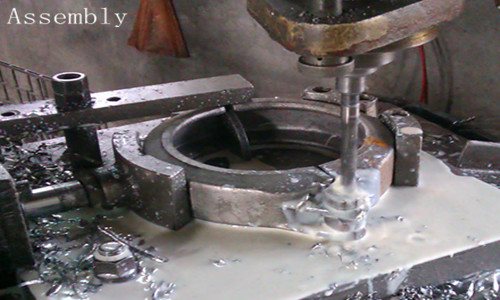



Concrete pump clamp Catalogue:
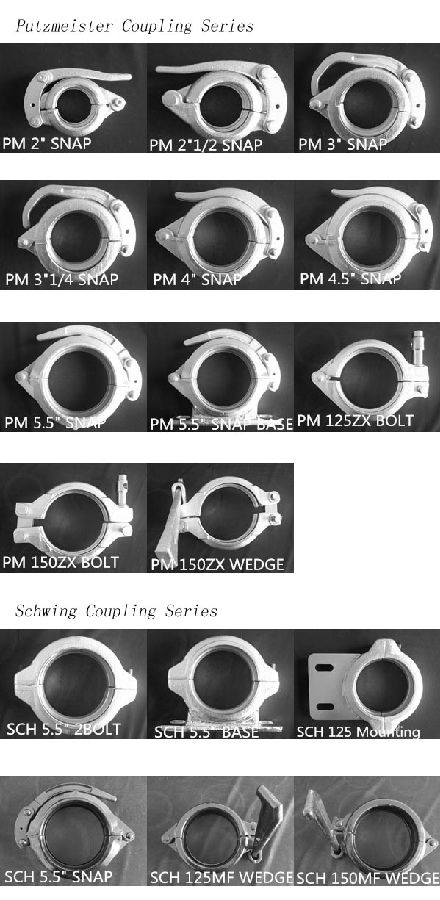

FAQ:
1.How do you regarding your product quality?
As our principle is more safety to save more. In China, there are lots of manufactures of this line, but we are the first one that use the forging technic in producing, firmly meet the PM standard.
2.Can I get some samples?
Of course you can. Small sample for free, but you pay the express. For some products are not small, like concrete pump pipe, it’s very difficult to deliver one pipe of 3000mm. If it’s possible, we’d like that you can come here to visit our factory. Welcome!
3. I want to make our logo on the products, is that ok?
Yes, it’s totally ok. OME is available from us.What you should do is send your logo, brand name, or picture to us. And let other things leave on us.
- Q: Are there any special tools required for replacing concrete pump spare parts?
- Yes, there are special tools required for replacing concrete pump spare parts. These tools may include wrenches, screwdrivers, hydraulic jacks, cranes or hoists, and specific equipment for removing and installing components such as seals, bearings, or pistons. Additionally, some specialized tasks may require the use of a welding machine or cutting tools. It is important to have the right tools to ensure a safe and efficient replacement process.
- Q: How do I determine the correct temperature ratings for concrete pump spare parts?
- To determine the correct temperature ratings for concrete pump spare parts, you should refer to the manufacturer's guidelines or specifications. These documents usually provide information on the recommended temperature range within which the parts can function effectively and safely. It is essential to follow these guidelines to ensure the longevity and performance of the spare parts in your concrete pump system.
- Q: How often should concrete pump pistons be inspected and replaced?
- Concrete pump pistons should be inspected regularly, ideally after every 200 to 300 hours of operation or at least once every three months. The frequency of replacement will depend on various factors such as the quality of materials being pumped, the pumping conditions, and the maintenance practices followed. However, as a general guideline, pistons should be replaced when signs of wear and tear, such as cracks, excessive leakage, or loss of pumping efficiency, become noticeable during inspections.
- Q: What are the signs of a damaged concrete pump accumulator?
- There are several signs that indicate a damaged concrete pump accumulator. One of the most common signs is a decrease in the pumping efficiency. If you notice that the concrete pump is not able to pump the concrete as effectively as it used to, it could be a sign of a damaged accumulator. Another sign is a decrease in the pressure of the concrete being pumped. If you notice that the pressure is not as strong as before, or if there are sudden drops in pressure during pumping, it could indicate a problem with the accumulator. Leaks around the accumulator are also indicative of damage. If you notice any fluid leaks around the accumulator, it could mean that the accumulator is damaged or the seals are worn out. This can result in a loss of pressure and inefficiency in pumping. Unusual noises coming from the concrete pump can also be a sign of a damaged accumulator. If you hear any strange noises, such as knocking or hissing sounds, it could be a result of a damaged accumulator. Lastly, if you observe any visible damage on the accumulator itself, such as cracks or dents, it is a clear sign of damage. These damages can compromise the integrity of the accumulator and affect its performance. In summary, signs of a damaged concrete pump accumulator include decreased pumping efficiency, decreased pressure, leaks, unusual noises, and visible damages. If you notice any of these signs, it is important to address the issue promptly to prevent further damage and ensure the smooth operation of the concrete pump.
- Q: How often should concrete pump control valves be inspected and replaced?
- Concrete pump control valves should be inspected regularly to ensure they are functioning properly and safely. The frequency of inspections will depend on the specific conditions and usage of the concrete pump. In general, it is recommended to inspect control valves at least once every three to six months. However, if the concrete pump is used extensively or in harsh conditions, more frequent inspections may be necessary. The decision to replace control valves should be based on the inspection results and the recommendations of the manufacturer or a qualified professional. If the control valves show signs of wear, damage, or malfunction, they should be replaced immediately to avoid any potential safety hazards or disruptions in the operation of the concrete pump. Regular maintenance and timely replacement of control valves are crucial to ensure the efficient and safe operation of the concrete pump.
- Q: What is the role of a concrete pump spectacle plate?
- The role of a concrete pump spectacle plate is to provide a stable and secure platform for the concrete pump to rest on during operation. It acts as a support base for the pump, ensuring that it remains steady and balanced while pumping concrete. The spectacle plate is typically made of durable materials such as steel or alloy, capable of withstanding the weight and pressure exerted by the pump. Its design includes various features such as slots or holes to allow for the attachment of accessories like clamps or pipes, enabling the smooth and efficient transfer of concrete from the pump to the desired location. Additionally, the spectacle plate may also have adjustable elements to allow for positioning and alignment adjustments, ensuring accurate placement of the concrete. Overall, the spectacle plate plays a vital role in maintaining the stability and functionality of the concrete pump, contributing to the successful completion of construction projects.
- Q: Why would the plugging concrete pump pipe
- When pumping, the choice of speed is critical, operators can not blindly map fast, sometimes more haste, less speed. When pumping for the first time, due to the large resistance of the pipeline, the pump should be pumped at low speed. After the pump is normal, the pump speed can be increased properly
- Q: What are the potential risks associated with the installation and replacement of concrete pump spare parts?
- There are several potential risks associated with the installation and replacement of concrete pump spare parts. One of the main risks is the possibility of improper installation. If the spare parts are not installed correctly, it can lead to issues such as leaks, decreased performance, and even equipment failure. This can not only result in costly repairs but also pose a safety hazard to workers and those in the surrounding area. Another potential risk is the use of counterfeit or low-quality spare parts. These parts may not meet the necessary standards and specifications, which can compromise the integrity and functionality of the concrete pump. This can also increase the risk of equipment failure and accidents. Additionally, the installation and replacement process may require workers to operate heavy machinery, such as cranes or forklifts, which can be hazardous if not done properly. There is a risk of accidents, injuries, or damage to the equipment or surrounding structures if adequate precautions are not taken. Furthermore, concrete pump spare parts may contain hazardous materials or substances. Workers need to be aware of the potential risks associated with handling and disposing of these materials, such as exposure to harmful chemicals or environmental contamination. Lastly, there is a risk of delays and downtime during the installation and replacement process. If spare parts are not readily available or if there are issues with their compatibility, it can result in extended periods of equipment inoperability. This can lead to project delays, increased costs, and potential financial losses. To mitigate these risks, it is important to ensure proper training and supervision of workers involved in the installation and replacement of concrete pump spare parts. Using genuine and high-quality spare parts from reputable suppliers can also reduce the risk of equipment failure. Regular inspections, maintenance, and adherence to safety protocols are crucial to minimize the potential risks associated with this process.
- Q: What are the different types of concrete pump rubber pistons?
- There are several different types of concrete pump rubber pistons available in the market, each designed for specific applications and requirements. Some of the commonly used types include: 1. Single-Action Piston: This type of piston is designed to push the concrete forward during the pumping process. It moves in a single direction, providing a consistent and efficient flow of concrete. 2. Double-Action Piston: Unlike the single-action piston, the double-action piston can move in both directions. This allows for a more versatile pumping process and can be useful in situations where there are obstacles or restrictions in the pump line. 3. Steel Reinforced Piston: These pistons are reinforced with steel to provide additional strength and durability. They are commonly used in high-pressure pumping applications or when pumping abrasive materials. 4. Polyurethane Piston: Polyurethane pistons are known for their excellent wear resistance and longevity. They are often used in demanding pumping conditions where durability is crucial. 5. Rubber Sponge Piston: Rubber sponge pistons are designed to have a soft and flexible surface, allowing them to conform to irregularities in the pump line. They are particularly useful in situations where there may be bends or corners in the line. 6. Bonded Piston: Bonded pistons are made by bonding a rubber or polyurethane material to a metal core. This combination provides both the flexibility of rubber and the strength of metal, making them suitable for various pumping applications. It is important to choose the right type of concrete pump rubber piston based on the specific requirements of the project. Factors such as pumping pressure, material being pumped, and environmental conditions should be considered to ensure optimal performance and longevity of the piston.
- Q: How often should concrete pump S valves be inspected and replaced?
- Concrete pump S valves should be inspected regularly, ideally every 500 hours of operation or at least once a year. However, the replacement of S valves will depend on various factors such as the quality of the concrete being pumped, the frequency of use, and the overall condition of the valve. It is recommended to consult the manufacturer's guidelines and seek professional advice to determine the specific timing of S valve replacement.
Send your message to us
Concrete Pump Clamp DN100 4
- Loading Port:
- China main port
- Payment Terms:
- TT OR LC
- Min Order Qty:
- 20 PCS
- Supply Capability:
- 1000 PCS/month
OKorder Service Pledge
OKorder Financial Service
Similar products
Hot products
Hot Searches
Related keywords
